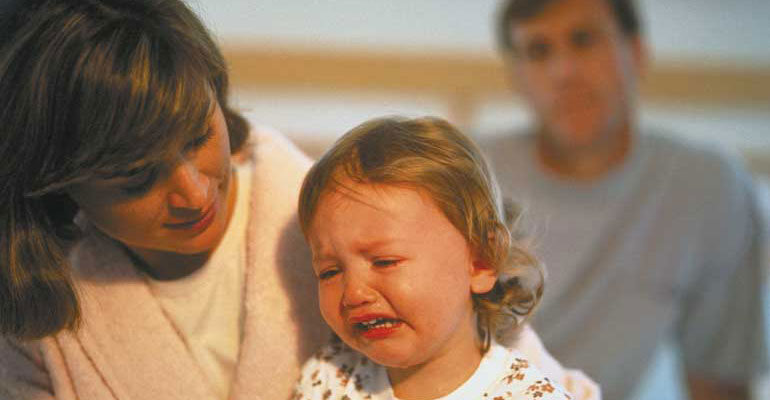Children ages three through five are believers in magic. For them, the line between reality and fantasy is blurry — especially after the lights go out.
Children this age do a lot of wishful thinking. In anger, they wish for parents to go away — then have nightmares about being left! Parents normalize this with assurances that all children wish that parents would go away sometimes, but this never causes them to disappear. (Children this age rarely link such fears with their adoption stories.)
Typical childhood fears are: the dark, monsters, getting lost, a witch under the bed, or having swamp creatures come up through the toilet. Strategies for coping need not be more realistic than the fears. Parents can check under the bed for the witch, or flush cleanser down the toilet to dissolve swamp creatures. One boy even flushed a small police car. Children gradually take on the unworried attitude of parents — with time.
In contrast, children who’ve had poor care or whose birth mother was extremely anxious while pregnant may be oversensitive to anxiety.
Fear of Losing Mom
Emma, who had a history of orphanage care, was anxious when her mother was out of sight. “I am afraid that you will die, or leave me forever,” she worried. Emma had other fears typical of her age, with a twist that revealed her own issues of neglect. After viewing an animated version of “The Hobbit,” she fretted, “Where, where is the Hobbit’s mother?”
Emma could not remember the events of her first year, but she did remember the feelings. When her parents used dolls to show her story, Emma finally saw the sequence of her experience. Her parents said, “We think your scary feeling of being left is from when you were in the orphanage. You were healthy and loved with your birth mother, and you are healthy and loved with us. During the in-between time you had busy nurses, not a mom and dad.”
“I hate that feeling,” Emma said. “Feeling, go away!” Prompted by her parents, she took breaths and said, “But it isn’t happening right now.”
“Not now and never again,” her parents agreed. “Practice being strong while we go upstairs for two minutes.” Emma began to cooperate in calming her anxious feelings and limiting her demands on her mother.
Some children have fears that are actually symptoms of traumatic stress. These little ones have been abused, or have experienced distressing losses or marked neglect. Signs of traumatic stress include:
- an exaggerated startle response
- hyper-alertness
- panic over stressful situations
- persistent night terrors
- difficulty falling asleep
- inexplicable physical complaints
- aggression
- emotional numbness
These are not features of a merely imaginative child; they signal real distress. This is a good age to begin healing in mental health treatment.
But typically, this “things that go bump in the night” stage is one in which logic takes a bow to imagination. And the best way to address a child’s normal fears is to enter into their magical world as their safe bridge back to reality.



